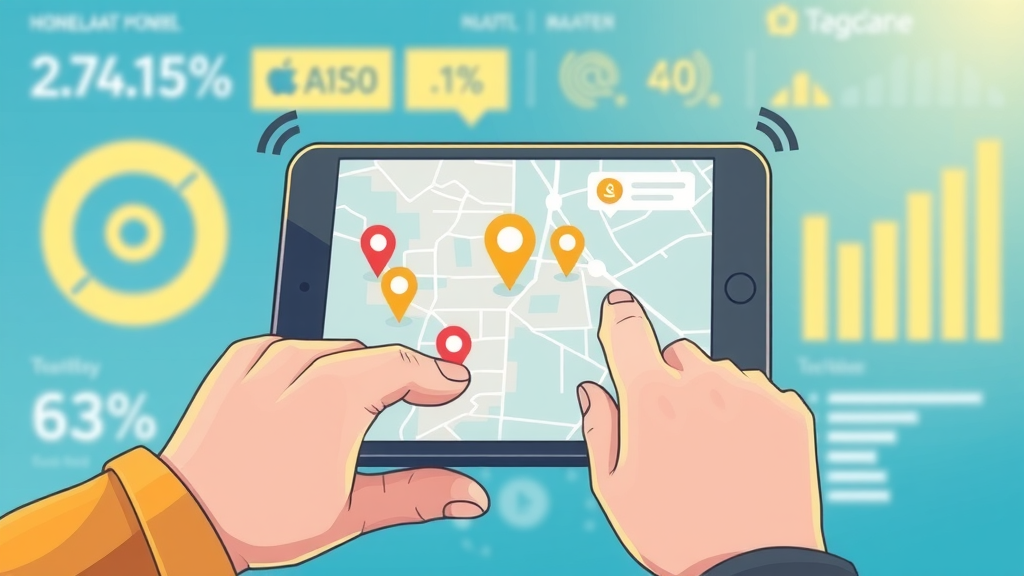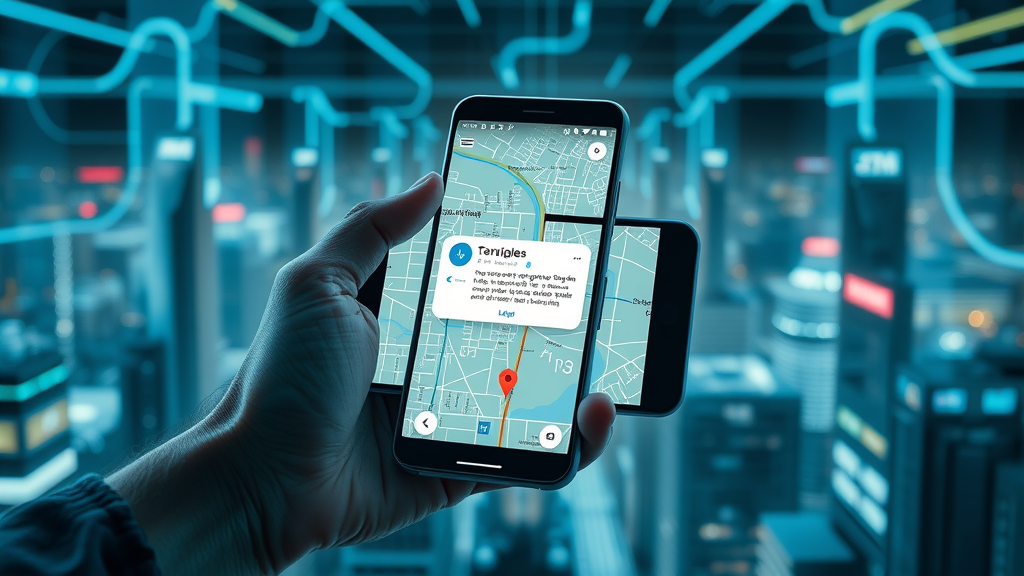Discover Geo-Targeted Advertising Secrets That Work

If you want to reach your best customers at the right time and place, here’s a fact: 80% of mobile users now expect ads tailored to their geographic location . Even more impressive, users are 60% more likely to interact with a geo-targeted ad than a generic one. In the competitive world of digital marketing, failing to master geo-targeted advertising could mean missing out on your most engaged audience. If you’re ready to outsmart your competition with precise, location-based strategies, this comprehensive guide will show you how to unlock the true potential of geo-targeted advertising.
Unlocking the Potential of Geo-Targeted Advertising with Hard-Hitting Facts
- Did you know that 80% of mobile users expect personalized information based on their geographic location and are 60% more likely to interact with a geo-targeted ad ? Find out why failing to master geo-targeted advertising today means missing out on the most engaged segment of your target audience.

Why Geo-Targeted Advertising is Transforming Modern Advertising Strategy
- Direct connection between geographic location and conversion rates
- Evolving audience targeting with location data and behavioral insights
- Overview of how geotargeting advertising is shaping industries from retail to B2B
Geo-targeted advertising is rapidly becoming a game-changer for businesses striving to connect meaningfully with their audience. Whether your goal is to boost conversion rates or build deeper engagement, aligning your advertising strategy with users’ geographic locations has proven to be incredibly effective. The power lies in reaching the right audience at the right time—delivering a targeted ad based on zip code, city, or even within a one-mile radius of your store.
What sets geotargeted advertising apart is its reliance on real-time location data and advanced behavioral insights. By combining where your customers are physically located with how they behave online, you can create advertising campaigns that feel personal, timely, and relevant. This evolving approach to audience targeting is reshaping industries across the board, from local retail outlets that want more foot traffic, to B2B companies looking for high-value leads in specific regions. With the right tools and strategies, mastering location targeting is now not just an option, but a necessity for continued growth.
What You Will Learn in This Guide to Geo-Targeted Advertising
- The science of choosing precise geographic locations and zip code targeting
- Making the most of location data for unbeatable audience targeting
- Real-world case studies showing geotargeted ad ROI
- Pro-level advertising strategy tips for social media and Google Ads
In this actionable guide, you’ll gain skills to select specific locations for your ads, interpret advanced location data to pinpoint your target audience, and apply best practices drawn from successful geotargeted ad campaigns in the field. You’ll also discover tips on leveraging Google Ads and social media so your advertising campaigns deliver results, no matter your industry.
Demystifying Geo-Targeted Advertising: What It Means and How It Works
What is Geo-Targeting Advertising?
- A simple breakdown of geo-targeted advertising , location target methods, and the rise of precise location targeting.
At its core, geo-targeted advertising is the practice of delivering a targeted ad to users based on their geographic location . Using a mix of location data , such as GPS signals, device location, and even IP address , marketers can ensure their ads are seen only by the most relevant audience. This means a restaurant downtown can push notifications to lunch-goers nearby, or a clothing retailer can run a sale ad in the exact zip codes most likely to convert.
The growth of mobile technology and location-tracking services have fueled the rise of precise geotargeted advertising . Today, marketers use a blend of tools like zip code targeting, geofencing , and behavioral audience targeting to reach users based on their location —from citywide promotions to one-mile radii around storefronts. These location target methods allow brands to drive higher foot traffic, measure local engagement, and optimize campaign results for every market segment.

Key Components of a Geotargeted Ad
- Geographic location
- IP address and device tracking
- Customizing content and call to action for defined geographic locations
Every successful geotargeted ad shares a few core ingredients. First, it starts with a defined geographic location : you choose a city, zip code, neighborhood, or customizable region to target. Next, modern platforms utilize IP address detection, GPS, and mobile device sensors to confirm if users are in those targeted areas . Finally, the content of the ad itself is personalized for the user’s location—including hyper-local offers, directions to a nearby store, or a call to action that speaks directly to the local audience.
By customizing your advertising strategy to reflect each region’s unique needs, you can show a different ad to beachgoers than to city commuters, or promote region-specific inventory during seasonal events. This deep level of location targeting and ad personalization is why geo-targeted advertising consistently outperforms standard, one-size-fits-all campaigns.
The Science Behind Geo-Targeted Advertising Strategy
Understanding Location Target and Location Data
- How to refine advertising strategy using zip code , location targeting , and advanced location data
- The link between geographic location , location data , and real-time ad performance
Using location targeting is more sophisticated than just dropping a pin on a map. With today’s technology, marketers can select zip code clusters, city districts, or even set up dynamic geofences around events or venues. Location data from GPS-enabled devices, app check-ins, or WiFi positioning not only reveals where your potential customers are, but also gives clues about their daily routines, preferences, and purchase intent.
This level of insight means you can adjust messaging to suit different location targets . For instance, a marketing campaign might use data to determine which neighborhoods respond best to weekend versus weekday promotions. Combined with real-time data on ad engagement and conversions, you get a feedback loop that continually sharpens your advertising strategy for better results.

Harnessing the Power of Audience Targeting
- Advanced audience targeting using behavioral profiles
- Creating hyper-targeted ads for different geographic locations
Audience targeting isn’t just about demographics anymore. By layering location data with behavioral patterns—like past purchases or browsing history—you can construct detailed user profiles. These profiles allow you to craft a targeted ad not just for a geographic area, but for those most likely to take action. For example, you could run a geotargeted ad promoting an after-school snack deal timed to coincide with school dismissal hours in family-heavy neighborhoods.
This approach helps businesses reach the most relevant audience and increase their marketing ROI, as ads are shown to those most prepared to engage or convert. As location targeting tech evolves, audience targeting becomes ever more granular, allowing you to run multiple versions of the same campaign tailored to micro-communities across town—or across the nation.
Essential Tools: Google Ads, Social Media, and Geofencing
- Achieving maximum ROI through Google Ads ‘ geotargeted advertising features
- Leveraging social media platforms for location targeting
- Geofencing and geotargeting : definitions and synergistic strategies
To run successful marketing campaigns, you’ll need to master essential tools. Platforms like Google Ads allow advertisers to set up campaigns granularly—by nation, city, region, or zip code. Their dashboards provide detailed location data , showing which ads perform best where, so you can refine your strategy on the fly. Meanwhile, social media channels like Facebook, Instagram, and LinkedIn offer location targeting features, enabling ads that show only to users in custom-defined locations or even those who have attended physical venues recently.
Geofencing is another critical tactic, creating a virtual perimeter around a specific area (like a retail store or event space). When a potential customer enters or exits the zone, they trigger a push notification or a targeted ad . Combining geofencing and geotargeting allows for creative, high-engagement campaigns, such as flash sales alerts to nearby foot traffic or personalized offers to event attendees.
Geo-Targeted Advertising in Practice: Examples, Campaign Types, and Proven Results
What is an Example of Geo Marketing?
- Practical examples including local restaurant promotions, retail offers using zip code targeting , and B2B outreach for defined geographic locations .
Consider a family-owned restaurant that launches a lunch special for users within a five-mile radius. When a local commuter opens a map app, they receive a targeted ad for the deal. Or, a nationwide retailer targets urban shoppers in specific zip codes with exclusive mobile coupons. Even B2B companies are getting in on the action, sending hyper-personalized LinkedIn ads to decision-makers within certain business parks or office corridors.
These precise geo marketing campaigns are powerful because they’re tailored to users’ immediate surroundings. Instead of generic messaging, every component—the offer, creative, and call to action—is customized based on the user’s current geographic location . This drives not just impressions, but real foot traffic and measurable results in-store or online.

Location-Based Campaigns That Drive Results
- Hyper-local geo marketing campaigns
- Nationwide geotargeted ad rollouts with regional customization
- Seasonal promotions using advanced location data analytics
Local boutiques often use hyper-local geo marketing to send push notifications to shoppers as they enter nearby malls. Large chains like coffee shops or gyms roll out nationwide geotargeted ad campaigns but adjust the creative to reflect each region’s preferences or weather. During holidays, both types of businesses can employ seasonal promotions —like targeting beachgoers during spring break or city dwellers before winter—with offers adjusted based on recent location behavior and zip code trends.
These real-world marketing campaigns highlight how businesses of all sizes can harness location targeting to increase engagement, drive conversions, and make the most of every ad dollar spent. The key is to tailor every message and offer for each group, wherever they are.
Industry-Specific Geo-Targeted Advertising Success Stories
- Mini case studies: retail, hospitality, real estate, and event marketing
Retailers have seen foot traffic double by delivering last-minute deals through geo-targeted advertising . One real estate agency used custom zip code targeting to advertise new property listings only in high-interest neighborhoods, resulting in a 40% increase in qualified leads. For hospitality, a hotel chain saw a 35% jump in bookings by running mobile-only ads within a five-mile radius of competing hotels. Event marketers regularly use location targeting to drive ticket sales with ads that update automatically as users move around the city during festival weekends.
These case studies demonstrate how tailoring your ad campaign by geographic location doesn’t just attract more eyes—it brings in the right eyes, ready to buy, book, or visit.
| Platform | Location Targeting Features | Strengths | Unique Capabilities |
|---|---|---|---|
| Google Ads | Country, region, city, zip code, radius, custom areas | Robust analytics, scalable campaigns | Local inventory ads, real-time data integration |
| Location, zip code, radius, places of interest | Highly detailed demographic overlays | Custom & lookalike audiences, event-based ads | |
| Location, zip code, radius, geotags | Visually-driven, dynamic creatives | Story-based CTAs, geotag filters | |
| Country, city, metro area | Professional & B2B targeting | Company-level targeting, job title overlays |
“The closer you get to your customer’s location, the more relevant and profitable your advertising becomes.” – Digital Marketing Innovator
How Geo-Targeted Advertising Works: Location Data, IP Address, and Beyond
How Does Geolocation Advertising Work?
- Step-by-step walkthrough: gathering location data , matching user devices and IP addresses , real-time ad delivery to the most relevant audience segments.
The process starts with collecting location data from various sources—GPS, WiFi, mobile apps, or cookies from desktop browsers. Each user’s device shares its IP address , which helps infer city, zip code, or even street-level details. Platforms like Google Ads and top social media networks then match this information against your location targets and audience parameters.
Once a match is found, the system delivers a highly relevant, targeted ad to the user’s device—sometimes instantly, such as via a push notification or as a promoted post in their social media feed. This ability to adapt to the user’s real-time whereabouts is what makes geolocation advertising so powerful: it helps you reach the right audience exactly when and where they are most receptive.

Technology Stack for Effective Geotargeted Advertising
- Tools for IP-based targeting
- Mobile device geolocation and geofencing integration
- Addressing privacy and GDPR concerns in location targeting
Effective geotargeted campaigns require a robust tech stack. This includes platforms that specialize in IP-based targeting , mobile SDK integrations for precise GPS-based location detection, and geofencing tools for micro-location accuracy. Modern ad campaign managers integrate these systems to track users as they cross designated boundaries, receive store entry push notifications, or check into event spaces.
User privacy and compliance are critical. Marketers must adhere to GDPR and local privacy laws by gaining consent for location tracking and data use. Leading platforms provide privacy settings, consent management, and clear opt-out options to balance effective location targeting strategies with user trust and transparency.
Essential Advertising Strategy Tips: Optimizing Your Geo-Targeted Ads
Defining Your Target Audience and Audience Targeting Goals
- Segmenting audiences by geographic location and intent
- Using behavioral and demographic overlays for precise targeting
Optimizing your geo-targeted advertising strategy starts with defining a clear target audience . Instead of addressing everyone in a city, segment by specific zip code or neighborhood that aligns with your campaign goals. Overlay demographic and behavioral data—like age, gender, interests, and past purchase behavior—so you serve the right message to the right people, at the right time. For example, a fitness studio could target ads to office workers within one mile of their location during lunch hours, increasing relevance and likelihood of conversion.

Measuring and Improving Geotargeted Advertising Performance
- Tracking metrics: impressions, engagement, conversion by location
- Interpreting results from Google Ads and social media campaigns
Once your geotargeted ad campaign is live, track location-specific metrics like impressions, click-through rates, engagement, and conversions by each defined region. Analyze these results in your Google Ads dashboard or the reporting tools of your chosen social media platform. You’ll quickly spot which geographic locations deliver the highest return, enabling you to reallocate budget to the best-performing areas and refine messaging for underperforming spots.
These analytics also reveal when people are most responsive, helping you schedule targeted ads for maximum impact—such as after work hours, event days, or during major local happenings—further enhancing your ROI and brand visibility.
A/B Testing Your Location Targeted Ads
- Structuring ad tests by zip code or geographic locations
- Analyzing results for continuous optimization
A/B testing is essential for ongoing improvement. Test different ad creatives, offers, or calls to action for each unique geographic location or zip code . Examine which variables lead to the best performance using clear metrics. For example, compare a time-limited lunchtime offer to a broader all-day promotion in adjacent neighborhoods. The data will reveal which messages resonate most, allowing you to iterate, fine-tune, and scale successful approaches for even better future results.

Master Geo-Targeted Advertising Strategies for Google Ads and Social Media
Are Google Ads Geo-Targeted?
- Detailed explanation of Google Ads geotargeting tools, setup tips, and best practices.
Yes, Google Ads is one of the gold standards for geo-targeted advertising. The platform lets you define your location target down to granular levels: country, city, zip code, and even custom radius around a physical location. With advanced settings, you can layer in demographic data, exclude certain areas, or adjust bids by how close a user is to your business.
Best practices include enabling location extensions so users see your nearest store location, using call-only ads for mobile users, and setting up real-time ad scheduling based on store hours or special events. These features help businesses reach the most valuable audience exactly when they’re able to convert, maximizing both efficiency and ROI.
Best Practices for Social Media Location Targeting
- Custom audience creation in Facebook, Instagram, and LinkedIn
- Using location data for dynamic creative and offers
On social media, location targeting is equally robust. Platforms like Facebook and Instagram allow advertisers to create custom audiences not just by interest, but by live or historical location data—such as those who visited a competitor’s venue or attended a recent event. LinkedIn lets B2B marketers focus on users working in specific metro areas or office towers.
Dynamic ad creative is key: use real-time location data to personalize messaging, like offering exclusive in-store discounts during lunch hours or promoting event registrations only within a driving distance of your venue. Creative offers tailored by geography almost always outperform generic campaigns, delivering stronger results for budget spent.
Combining Geofencing and Geotargeting for Hyper-Local Impact
- How geofencing complements location targeting in retail and events
- Innovative case studies for real-time campaign triggers
Geofencing and geotargeting work even better together. Geofencing creates a virtual border—like around a retail store or stadium—while geotargeting shows ads to users inside or nearby that border. Imagine a shoe store that sends instant push notifications to passersby within a geofenced area, offering a flash sale right when they’re likely to drop in. Or event marketers who set up geofences around conference venues and send instant access deals or schedule updates to attendees in real time.
These tactics make campaigns remarkably responsive: they connect with potential customers at the precise moment they’re ready to act, driving both digital engagement and real-world foot traffic.

| Industry | Average Conversion Rate | Notes |
|---|---|---|
| Retail | 8-13% | Boosts local foot traffic & sales |
| Hospitality | 10-15% | Increases last-minute bookings |
| Real Estate | 12-20% | Targets high-intent buyers by zip code |
| Local Services | 7-12% | Drives appointments & walk-ins |
“Geotargeted advertising has single-handedly doubled our footfall traffic and local sales quarter over quarter.” – Local Business Owner
Top Mistakes to Avoid in Geo-Targeted Advertising
- Overly broad location targeting leading to wasted budget
- Not leveraging zip code data to refine ad spend
- Neglecting to update ads for changing geographic locations or audience profiles
- Ignoring data privacy and regulatory concerns
Many businesses launch geo campaigns that are too broad, serving ads to less relevant audiences and quickly blowing through their budget. Another common pitfall is ignoring zip code data to fine-tune audience selection—missing the chance to maximize conversions in high-performing neighborhoods. Regular updates are also crucial; as your target audience moves or shifts preferences, your campaigns must adapt, or you’ll be left behind. Finally, always monitor evolving privacy laws; compliance builds trust and avoids costly mistakes.
Expert Answers: Common Geo-Targeted Advertising FAQs
What is geo targeting advertising?
- Geo targeting advertising is the practice of serving online content or ads to users based on their geographic location, using IP address, GPS, and location data to improve relevancy and engagement.
Geo targeting advertising is a cutting-edge digital marketing technique where ads or content are shown to people based on where they are physically present. Using technology like IP addresses , device GPS signals, and location data from apps, brands can ensure their targeted ads are only seen by users in a certain city, neighborhood, or within a defined radius. This approach increases the likelihood of engagement and conversion because the ad is highly relevant to the user’s environment or needs at that very moment.
What is an example of geo marketing?
- Running a limited-time restaurant offer that only shows on mobile devices within a 5-mile radius of the physical store.
A classic example of geo marketing is a local restaurant launching a weekend-only lunch deal. The owner sets up a mobile ad campaign that is only visible to users within a 5-mile radius of the restaurant. This ensures that only nearby potential customers see the ad, increasing the chance they’ll stop by for a meal, rather than wasting budget on users far away who won’t convert. The result is better ROI and more targeted local reach.
How does geolocation advertising work?
- It works by using data from devices, IP addresses, GPS, and apps to identify a user’s location, then serving targeted ads to those users based on their real-time whereabouts.
Geolocation advertising leverages a combination of GPS signals, mobile app permissions, WiFi, and even Bluetooth beacons to pinpoint a user’s current location. This location data is matched to your ad campaigns’ location targets . When a user enters a designated area or meets your targeting criteria, the platform delivers a customized targeted ad , often in real time via mobile devices or app notifications.
Are Google ads geo-targeted?
- Yes, Google Ads offers sophisticated geotargeting tools that let advertisers show ads by country, region, city, or even custom radius or zip codes.
Absolutely. Google Ads provides highly sophisticated geo-targeting options. You can direct your campaigns to specific cities, states, zip codes, or even a radius around your storefront. This allows you to focus spend where it’s most effective, track performance by region, and constantly re-optimize your ads for local audiences and shifting trends.
Action Steps to Launch Your Next Geo-Targeted Advertising Campaign
- Define your geographic location targets
- Refine your audience targeting and select ideal zip codes
- Choose your platform— Google Ads , social media , or both
- Set up your campaign with tailored creative for each location
- Monitor, A/B test, and optimize using live data
- Stay compliant with privacy best practices

Ready to Transform Your Local Reach with Geo-Targeted Advertising?
- Want help applying these strategies to your business? Book your free strategy call now , and get clear, practical steps to grow your local reach fast.
Take control of your marketing strategy—start your geo-targeted advertising campaign, monitor results, test creative, and see your local business grow like never before.
Geo-targeted advertising is a powerful strategy that enables businesses to deliver personalized content to users based on their geographic location, enhancing engagement and conversion rates. For instance, a restaurant can promote lunch specials to nearby professionals just before noon, increasing the likelihood of attracting customers seeking a quick meal. ( excellentpublicity.com )
However, it’s crucial to address privacy concerns associated with collecting and using location data. Advertisers must obtain explicit user consent and comply with data protection regulations like the General Data Protection Regulation (GDPR) and the California Consumer Privacy Act (CCPA) to ensure transparency and maintain consumer trust. ( digimarkedu.com )
Implementing geo-targeted advertising effectively involves defining clear geographic boundaries, combining location data with audience segmentation, and tailoring messaging to reflect local preferences. By doing so, businesses can create more relevant and engaging campaigns that resonate with their target audience. ( clickguard.com )
In summary, geo-targeted advertising offers businesses the opportunity to connect with consumers in a meaningful way by delivering location-specific content. By adhering to best practices and addressing privacy considerations, companies can leverage this strategy to drive engagement and achieve better marketing outcomes.





